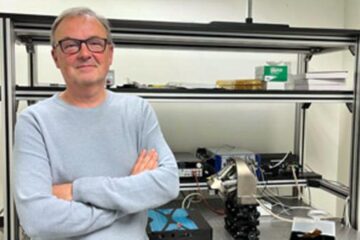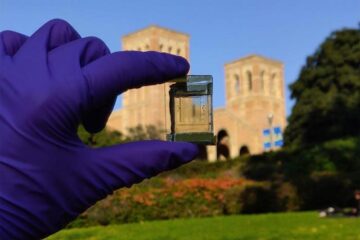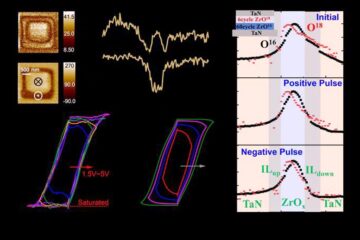Gene mutation found that increases severity of multisystem syndrome

Discovery mirrors expectations for genetic complexity of common diseases
Johns Hopkins scientists studying a rare inherited syndrome marked by eye and kidney problems, learning disabilities and obesity have discovered a genetic mutation that makes the syndrome more severe but that alone doesn’t cause it. Their report appears in the advance online edition of Nature (Dec. 4).
The new discovery about Bardet-Beidl syndrome (BBS) came from a panoply of studies — starting with comparative genomics and experiments with yeast, and moving to experiments with zebrafish and genetic analysis of families with the syndrome — and mirrors what experts expect for the genetically complex common diseases that kill most Americans, like diabetes, heart disease and cancer.
“Scientists are going to have to think very hard before they discount genetic variation that appears not to directly cause a disease,” says the study’s leader, Nicholas Katsanis, Ph.D., associate professor in the McKusick-Nathans Institute of Genetic Medicine at Johns Hopkins. “The onus is on us to figure out how to dissect the effects of what appear to be silent genetic variants. I have a greatly renewed respect for the complexity of the genome, for the subtle ways that genes and gene products interact with each other.”
Conventional wisdom says that a collection of subtle genetic variations contribute to a person’s risk of common diseases, but hunting for such subtle effects is daunting. As a result, most gene hunts have targeted relatively rare diseases that appear from their pattern in families to be fairly simple genetically.
Katsanis and his colleagues have recognized for years that BBS, although rare, is more similar to the genetic complexity of common diseases, in part because patients with this condition have extremely variable severity, even within families. The newly identified mutation, in a gene called MGC1203, is the first to affect only the severity of the syndrome. Mutations in eight other genes, all dubbed BBS genes, are known to cause the disease, often in combination with each other.
The identification of MGC1203’s role in BBS stems from the researchers’ earlier discovery that disease-causing mutations in the BBS genes disrupt the function of cilia, tiny structures that can act like antennae on cells (in the eye and brain, for instance), help cells move (e.g., in sperm), or help move fluid around cells (in the lung and brain, for example).
To build on this finding, Katsanis and his team combined results from two data-rich experiments. In one, Katsanis and members of his lab used yeast to identify proteins that interacted with the yeast’s BBS proteins. Sixty turned up in their first round of experiments. In the other, reported last year, a large research team compared the genomes of various species to identify genes involved in the function of cilia. More than 600 were found.
But by identifying which turned up in both sets of results, the researchers narrowed down the hunt to just one gene — MGC1203.
Using standard tools of biology, the Johns Hopkins researchers determined that the MGC1203 protein is found in the same part of the cell as BBS proteins and that the MGC1203 and BBS proteins interact. Furthermore, by studying the genes of families with BBS, they also discovered that the most severely affected individuals have a single mutation in their MGC1203 gene. And zebrafish carrying mutations in both MGC1203 and BBS genes had more severe problems than zebrafish carrying only BBS gene mutations.
At first glance, the mutation appears not to affect the sequence of the MGC1203 protein, which stumped Katsanis. But because so much evidence pointed to a role for this mutation in the disease, Katsanis and postdoctoral fellow Jose Badano kept searching.
Their perseverance paid off. Like other genes, the MGC1203 gene is made of DNA, and its message is transcribed into DNA’s cousin, RNA. The RNA, in turn, can be cut apart and put back together in various ways and then “read” to build a protein, much like raw video footage can be edited to make different movies.
For MGC1203, two different RNA messages are normally produced, one that is used to make protein, and one that is destroyed by the cell, the researchers discovered with help from the Howard Hughes Medical Institute laboratory of Hopkins researcher Harry Dietz, M.D.
Badano and Katsanis then discovered that the genetic mutation in MGC1203 shifts the normal balance of the two RNA messages, increasing the amount of the destroyed message produced. That shift alone seems to be the problem, says Katsanis, who is now studying how it affects the biology of cells.
“Everyone’s cells make both messages, but people with the BBS-associated mutation make more of the version that the cell destroys right away,” says Katsanis, whose laboratory also is studying the MGC1203 protein’s exact role in cells. “Somehow, this exacerbates the effects of mutations in the BBS genes.”
Katsanis says that he suspects the human genome contains thousands of variants with similarly subtle effects that contribute to complex genetic diseases like obesity, diabetes and hypertension.
Media Contact
All latest news from the category: Life Sciences and Chemistry
Articles and reports from the Life Sciences and chemistry area deal with applied and basic research into modern biology, chemistry and human medicine.
Valuable information can be found on a range of life sciences fields including bacteriology, biochemistry, bionics, bioinformatics, biophysics, biotechnology, genetics, geobotany, human biology, marine biology, microbiology, molecular biology, cellular biology, zoology, bioinorganic chemistry, microchemistry and environmental chemistry.
Newest articles

A chip unique in the world
A team from UPV and iPRONICS has manufactured the first universal, programmable and multifunctional photonic chip on the market. A team from the Photonics Research Laboratory (PRL)-iTEAM of the Universitat…

Advance in light-based computing
…shows capabilities for future smart cameras. UCLA-developed experimental device demonstrates ability to reduce glare in images. Researchers developing the next generation of computing technology aim to bring some light to…

Evidence for reversible oxygen ion movement during electrical pulsing
…enabler of the emerging ferroelectricity in binary oxides. In a recent study published in Materials Futures, researchers have uncovered a pivotal mechanism driving the emergence of ferroelectricity in binary oxides….





















